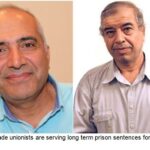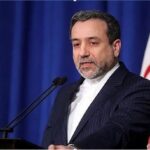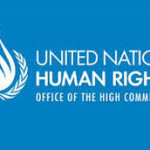
As a new president takes office amid a suspiciously low turnout, the regime’s grip on power grows ever more tenuous as the crises and rebellions become more regular, writes JAMSHID AHMADI, Assistant General Secretary of CODIR
ON Saturday June 6 2024, the election machinery of the Islamic Republic of Iran (IRI) brought about the appointment of a new president, Dr Masoud Pezeshkian. This charade of an election took place at a time when that theocratic regime finds itself mired in an acute multi-faceted crisis deeply impacting upon the economic, political, and social life of Iran.
Held barely two months after the criminal former president Ebrahim Raisi was killed in a bizarre helicopter incident along with his foreign minister and other senior advisers, the manipulation of the process to elect his successor was supposed to provide a distraction, and thus respite of sorts for the regime, from the continually simmering tensions domestically and the troubles looming beyond Iran’s frontiers, both regionally and globally.
On the one hand, the clerical regime is facing a sharpening crisis of legitimacy at home in the eyes of the Iranian public. On the other, it faces the very real prospect of a catastrophic spillover of Israel’s bloody campaign against Gaza and the Palestinian people into a regional war drawing in the IRI and its proxy forces. That is not to mention the growing pressure on the regime owing to its, as of now, unchecked uranium enrichment programme.
Despite outward appearances and false projections, the elections in Iran are wholly undemocratic as the regime, through its Council of Guardians, vets a shortlist of suitable candidates before they are allowed to enter the contest. Thus, all candidates are ultimately checked and approved, or not, by the unelected Supreme Leader of the IRI, Ayatollah Ali Khamenei.
The Supreme Leader is the de facto head and absolute ruler of the theocratic regime that has presided over Iran and its people through ruthless oppression for over 40 years now. Supposedly to safeguard the realm, nothing of significance can be decided or acted upon in terms of Iran’s internal or external policies without his prior approval. All three branches of the state are utterly subservient to Khamenei’s diktat.
Consequently, in the Islamic Republic of Iran, all elections are carefully engineered end-to-end so as to ultimately deliver a “suitable” president. Of fundamental importance to the regime is to give the appearance of a high turnout at the polls and thus maintain a facade of legitimacy.
This it does through blatant vote rigging. The regime has, over the years and several electoral processes, perfected a method for appointing the president and members of the parliament ensuring the entire state apparatus is compliant with the governing doctrine of “political Islam” as overseen by the Supreme Leader.
Pezeshkian, a former heart surgeon and longtime regime acolyte, acknowledged this state of affairs in his election campaign, repeatedly stating that his programme would not transgress beyond the confines of the strategic framework policies declared by the Supreme Leader. This lays bare the meaninglessness of the billing and fanfare that somehow touts Pezeshkian as a “reformist.”
The ruling theocratic dictatorship as a whole, particularly the Supreme Leader at its head, is deeply discredited in the eyes of the vast majority of Iranian people. Over three decades of harsh neoliberal economics, beginning with brutal shock therapy, in line with IMF prescriptions and the Washington Consensus, have had a devastating socioeconomic impact upon the Iranian people.
Inflation is sky-high and out of control, the national currency reduces in value by the hour, unemployment is at an all-time high, and crushing poverty is rampant throughout Iran. This combined with the brutal oppression of social and individual human rights has created a widening and unbridgeable chasm between the theocratic regime and the long-suffering people.
People in Iran see that while the majority of them suffer acute economic deprivation, the regime-connected elite accumulate vast wealth in a highly corrupt parasitic and financialised economy. The people also bear witness to the reality that any organised civic protests or independent trade union activities in pursuit of their legitimate demands are brutally repressed by the regime’s enforcers.
The manifest and growing rift between the majority of Iranian people and the ruling dictatorship has resulted in three mass uprisings, and very low turnouts at the regime’s sham elections, in just the last five years alone.
The social base of the Islamist regime is imploding, causing a massive internal imbalance and worsening tensions inside Iran. This deepening multifaceted crisis means that the IRI leadership is now in perpetual fear of the Iranian people.
The regime’s leadership has realised that its reliance on naked unadorned brute force as the default tool in managing the crisis it faces is becoming less and less effective. Following the death of Raisi on May 19, the regime desperately needed to counter the escalating crisis in its legitimacy by installing another obedient president in his place, albeit with a new face and fresh rhetoric.
The Supreme Leader and his crisis management advisers were fully aware that they could not simply replace the unpopular former president with another similar hard-line figure, as this would likely fan the fire smouldering under the ashes of popular discontent.
Thus, Masoud Pezeshkian entered the arena posing as a supposed “reformist” and “clean” candidate. The greenlighting of Pezeshkian’s candidature by the Council of Guardians (having been barred twice previously) to join a shortlist of five other discredited hardliners was a shrewd political calculation on the part of the regime. And it could only have been permitted by the office of the Supreme Leader in the hope of averting an overheating of the already febrile political atmosphere providing the backdrop to the election.
In an attempt to further manipulate public opinion, Pezeshkian’s election campaign bandwagon was permitted to express rhetoric regarded as radical and even critical of aspects of the regime’s rule over the past four decades. Such rhetoric would usually be regarded as treasonous and subject to harsh punishment.
However, this manoeuvring by the regime proved to be more or less completely ineffective even according to the regime’s own analytics. In the first and second rounds of the election, turnouts were under 40 per cent and 50 per cent respectively and Pezeshkian could only take a derisory 27 per cent of the total eligible vote even with the regime’s electoral machinations.
Looking ahead, Ayatollah Khamenei’s latest presidential appointment will quickly have to attend to a series of political and economic crises broadly resulting from decades of disastrous political, socioeconomic, and environmental policies.
“Pezeshkian will have to comply fully with the policies dictated by the Supreme Leader while trying to ease US-imposed sanctions; negotiations conducted, as per usual, behind closed doors …”
The effects of these on ordinary people in Iran are huge and have been massively exacerbated by the US-led economic sanction regimes — a tool wantonly deployed in furtherance of Washington’s own designs through the inflicting of suffering upon those who are innocent and blameless in this continuing tragedy.
The coming weeks and months will once more prove that the ruling theocratic dictatorship is unreformable in terms of its inherently oppressive and reactionary nature and policies as regards Iran and its people. Any changes that take place are likely to be aesthetic and superficial at best and, in any case, will be subject to the assent of Khamenei and ultimately disposed towards maintaining the hegemony of political Islam in Iran.
Meanwhile, on the international stage, the role of the president-elect will be to reach an amenable reset of foreign policies and relations, especially vis-a-vis the US, while keeping up the vulgar pretence of the IRI’s special brand of “anti-imperialism.”
Here, Pezeshkian will have to comply fully with the policies dictated by the Supreme Leader while trying to ease US-imposed sanctions negotiations conducted, as per usual, behind closed doors and beyond proper scrutiny.
Regardless of the identity of the anointed president, or the particular faction of the regime to which he belongs, it will be the long-suffering Iranian people who will have to endure the brutal reality of theocratic dictatorship’s continuation along with that of its moribund political economy.
The installing of another pliant president through a sham election is not what the majority of the Iranian people have been demanding. They and the progressive forces in the country have repeatedly and resoundingly expressed their demand for fundamental political and socioeconomic changes. The reality is that such changes can only be realised through a transition in Iran from a reactionary dictatorship to a national democratic republic.
Jamshid Ahmadi is assistant general secretary of the Committee for Defence of Iranian People Rights (www.codir.net) and vice-president of the World Peace Council for the Middle East Region.












 Posted in
Posted in 











